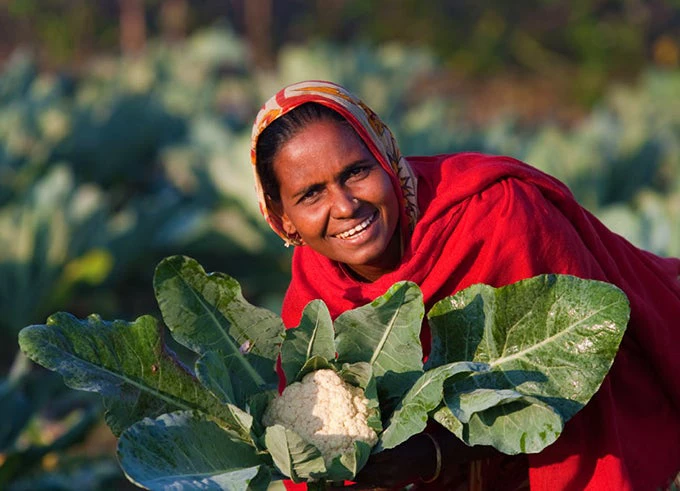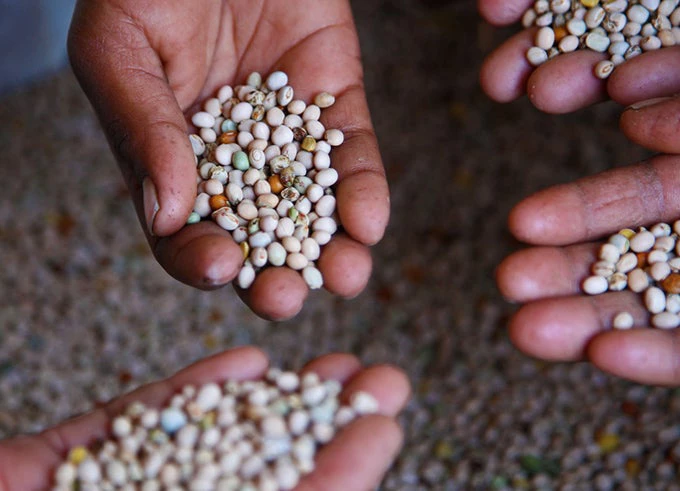
Together with more than 1,500 academics, scientists, and policymakers, we participated last week in the Rice Olympics.
The event—formally known as the International Rice Congress (IRC)—provides a unique window on the latest innovations and policies about the globe’s most important staple crop.
For many, rice may not seem worth the cost of a conference trip. Yet, half of the world’s population depend on it as their main supply of nutrients and energy.
“Rice isn’t just a crop,” said Rajan Garjaria, Executive Vice President for Business Platforms at Corteva Agriscience. “It’s a way of life. A place can be made or broken, based on their rice crop.”
The Congress discussed a breadth of topics, but what stood out the most is that rice can be instrumental in making people healthier and in sustaining the planet.
The South Asia Food and Nutrition Security Initiative (SAFANSI), a World Bank partnership that aims to improve food and nutrition security across the region, participated in the Symposium on Sustainable Food Systems and Diets and presented its latest research on linkages among food prices, diet quality, and nutrition security.
Overall, the event underscored how governments and health authorities in many developing countries face the dilemma of how to feed their growing population while ensuring their food is nutritious and discussed relevant strategies to transform nutrition security challenges into opportunities.

Here are our five takeaways about food, nutrition, and sustainability in South Asia and beyond:
- In many parts of the world, in particular across Asia, poor nutrition is a food quality issue, not a food quantity issue. Whether one has enough rice to eat is less a concern than whether one is consuming sufficient nutrients. To enhance food quality, we can fortify what people eat the most —rice— by adding nutrients. And we can promote diverse diets, diversifying consumption away from too much rice, towards more nutrient-rich foods. While often thought of as competing solutions, fortification and diet diversification are likely parallel solutions.
- Diverse foods are unavailable and unaffordable to many. While it often seems that there are many food options on supermarket shelves— thousands of seemingly different products are made from only six food products, including wheat and corn. Further, the availability of diverse foods is just one piece of the puzzle as they also must be affordable to meet consumers’ demand. As rice prices increase, relative to nutrient-rich foods, people will diversify their diets away from rice. But, this substitution effect is only one part of the picture. Since many people consume plenty of rice, as rice prices increase, the income available to purchase other foods becomes constrained. This is particularly apparent in South Asia, where evidence shows that higher rice prices actually reduce diet diversity.
- We are transitioning away from simply addressing hunger and the lack of calories, to addressing hidden hunger and the lack of nutrients. However, we are also now facing the double burden of malnutrition: living together are people who are eating too little of the right thing and those eating too much of the wrong thing. In fact, nine out of 10 countries face this double burden of malnutrition, including India, which is home to 40 percent of the global underweight population but is ranked fifth in global obesity. As such, tackling both undernutrition and overnutrition will require much more than the current set of strategies available to us.
- The homogeneity of foods in the food system used to feed the world has greater implications for biodiversity and for sustainability. The diversity of cultivated crops declined by 75% during the twentieth century, and a third of today’s diversity could disappear by 2050. Moving towards food systems for healthier people can translate into food systems for a sustainable planet. Diversifying diets for healthier people can lead to increased biodiversity in crop production for a sustainable planet. These are not necessarily competing agendas and can become mutually enforcing.
- Food systems do not only contribute to the sustainability of the planet, but they are also themselves affected by a changing planet. Climate change is threatening to change the conversation about nutrition, away from food quality back to an issue of food quantity. Climate change lowers the yields of key cereals, including rice. Exciting progress has recently been made to strengthen our adaptation to climate change. The world’s largest rice gene bank—which stores 136,000 varieties— has secured indefinite funding. The gene bank is used to develop varieties that can withstand drought and flooding. Additionally, the gene bank preserves genetic variation, to help cope with biotic and abiotic stresses which may challenge rice production, around the world in years to come.



Join the Conversation